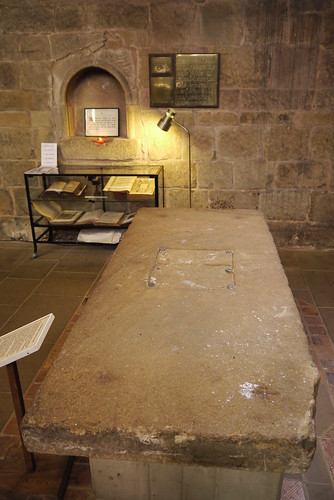Most stone altars were removed from Anglican churches during the reformation so it is remarkable that this one has remained in tact. When the priory was restored in the 1980s this stone was recognised as being a former alter stone. It had at one time been used as a tombstone and the large square that can be seen is where a brass plaque was mounted when it was used as such. The brass plaque can be seen on the wall above the altar.
On the centre of this square there is a deep indentation where it is thought that a sacred relic may have been housed and covered by a stone ’seal’. Five crosses, blessed with holy oil at the consecration of the altar are cut out, one in each corner and one to the centre right of the stone. They represent the five wounds in the body of the crucified and risen Christ.









Ha! Cos that particular slab was too heavy to lift it up.
I think if that had been fixed to the walls it would have weakened them despite their sturdyness!!!
I’m glad that it survived what with so much being destroyed after the Reformation and in the following century or so. It does please me that there are stil uite a few surviving fragments of frescoes and other pieces of church art. I must go to see the Wenhaston Doom
There are so many hidden gems
I have never heard of Wenhaston Doom!
This is an great composition Cherie and i enjoyed reading about the history behind the altar stone….thanks for sharing it with us….peter:)
I found the history interesting too. It is not something you see every day.